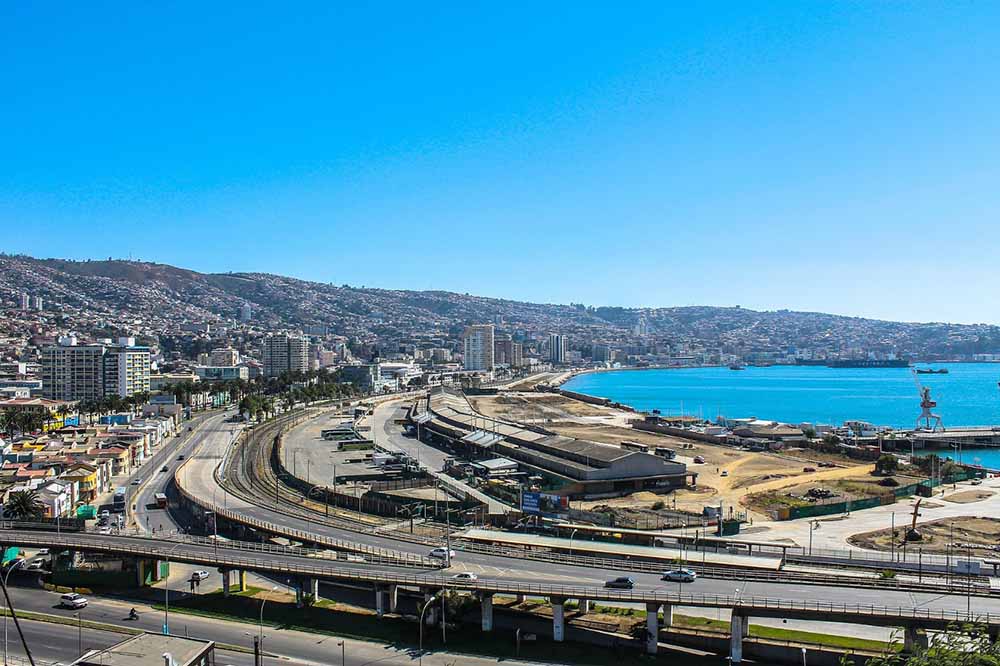Chile, with its extensive coastline and strategic location along the southwestern edge of South America, boasts a robust network of seaports that play a pivotal role in the nation’s economy. The country’s unique geographical characteristics, including its proximity to the Pacific Ocean, have endowed it with numerous ports that facilitate the movement of goods, making it a crucial player in international maritime trade. Chile’s ports not only serve as vital gateways for exports and imports but also position the country as a leading force in the Latin American market, connecting with key trade partners in Asia, Europe, and the Americas.
Chile’s economic standing in the region is underscored by its Gross Domestic Product (GDP), which ranks as the fifth largest in Latin America. The country’s economy is characterized by its stability and dynamism, which have enabled it to forge a myriad of trade agreements, further enhancing its global trade relationships. Currently, Chile is home to 39 cargo ports, with Valparaíso and San Antonio standing out as the most significant, handling over 55% of the nation’s maritime trade. In this article, we will delve into the details of the five most important cargo ports in Chile, exploring their history, capabilities, and contributions to the country’s economy.
1. Port of Valparaíso
“Situated in a broad bay, with a wide mouth facing north, Valparaíso appears in the night as a magnificent necklace of gemstones.”
Traditionally recognized as Chile’s principal cargo port, Valparaíso is located 110 kilometers from the capital, Santiago, in the Valparaíso Region. Its strategic position on the southwest coast of South America, coupled with its extensive network of roads and railways, allows the port to handle a significant volume of imports and exports annually.
The history of Valparaíso as a port dates back to 1810, when the city was divided into two villages—Almendral and El Puerto—separated by the Cape. Near the Cape, a wealthy merchant constructed a dock known as “Villaurrutia” near the Chivato Cave, where the “El Mercurio de Valparaíso” newspaper building now stands.
Between 1810 and 1831, additional piers were built, and in 1832, the first bonded warehouses were established for the storage of goods arriving from Europe and Asia. Later, between 1870 and 1876, the Fiscal Wharf was constructed, providing services until around 1919. Following the opening of this wharf, the Prat Wharf was built to accommodate passenger traffic. This expansive wooden structure, which extended several dozen meters into the sea, also served as a popular promenade for the city’s residents.
Today, the Port of Valparaíso is Chile’s leading container and passenger port and one of the most active ports on the Pacific coast of South America. It handles over 10 million tons of general cargo annually and processes around 30% of the country’s total foreign trade through its terminals.
2. Port of San Antonio
Located in central Chile, just 100 kilometers from Santiago, the Port of San Antonio is another key player in the nation’s maritime trade. Its strategic location, coupled with connections to major highways and an intermodal rail link, makes it a vital hub for the import and export of goods.
The port’s deep waters, long berths, specialized bulk cargo terminal, and weather-protected terminal are some of its distinguishing features. In June 2021, the port achieved a remarkable 32% increase in containerized cargo throughput compared to the same month in 2020. Specifically, 1,509,654 tons of containerized cargo were moved in June 2021, up from 1,142,491 tons in 2020. The cumulative increase for 2021 was 19.6%.
Since January 2021, San Antonio’s containerized cargo volume has consistently exceeded 1.5 million tons per month, with May recording the highest volume at 1,680,392 tons, a 21% increase from the previous year.
Together, Valparaíso and San Antonio are Chile’s two primary cargo ports, making them strategic areas of influence in the country’s logistics and maritime transportation sector.
3. Port of Coronel
The Port of Coronel is a multipurpose port located in the Bío Bío Region, specializing in containers, general cargo, and bulk goods. Situated 30 kilometers south of Concepción, the capital of the Bío Bío Region, the port is geographically positioned at 37°01’30” South Latitude and 73°09’30” West Longitude, within the sheltered bay of Coronel, which offers calm conditions for most of the year, facilitating efficient port operations.
The port’s proximity to agricultural, forestry, and fishing centers—the productive and export heart of central southern Chile—enhances its logistical capabilities. Additionally, its location within an industrial development zone, with road and rail connections to the north and south of the region, further supports the efficient import and export of goods. The port is equipped with 1,800 meters of internal railway tracks that traverse the entire port area, allowing for the safe and efficient reception and dispatch of cargo.
Over time, the Port of Coronel has become the primary port for exports from the Bío Bío Region. In the second quarter of 2021, it was the maritime terminal with the highest total transfer value, amounting to USD 1,075.63 million FOB.
4. Port of Lirquén
DP World Lirquén is the leading private public-service port in Chile, located in the Bay of Concepción, 500 kilometers south of Santiago, in the Bío Bío Region. With an installed capacity of nearly 7,000,000 tons per cubic meter, thanks to its six berths and the largest yard and warehouse area in the region, Lirquén is a highly efficient multipurpose terminal.
The port’s history dates back to the mid-20th century when, in 1953, the Lirquén Coal Company extended its pier to allow for the direct docking of ships, eliminating the need for barges to load coal. Initially, the port was used to ship coal, phosphorite, and bagged sugar.
In the early 1990s, the first container services began arriving in the region, and the then-called Port of Lirquén was a pioneer in handling such vessels. Since 1993, container traffic in the region has grown steadily, with sustained increases in recent years.
In the following years, the port’s infrastructure continued to expand, with the addition of new piers and storage areas to keep pace with the growing volume of cargo. Today, the port boasts 250,000 square meters of container yards, 135,000 square meters of warehouses and yards for cargo services, and the capacity to accommodate ships up to 367 meters in length—the largest vessels to call at the west coast of South America.
5. Port of Angamos
Located in the heart of Chile’s mining region, Port Angamos is situated in the municipality of Mejillones, 1,400 kilometers from Santiago and just 65 kilometers from Antofagasta. The port was established on November 3, 1999, as a closed joint-stock company after winning the bid for the construction and operation of Terminal No. 1 of the Mejillones Port Complex in the Antofagasta Region. The concession was granted for a period of 30 years, extendable to 40 years.
Port Angamos’ strategic location near the world’s most important copper mining district, home to renowned mines such as Chuquicamata, Escondida, Spence, Radomiro Tomic, El Abra, and El Tesoro, makes it a key player in the region’s logistics network. The port is well-connected by rail and road, linking major mining operations in both Chile and neighboring countries like Argentina and Bolivia without the need to pass through populated areas.
The Future of Cargo Transportation with KLog.co
As Chile continues to solidify its position as a leader in international maritime trade, companies like KLog.co are revolutionizing the way cargo is transported across borders. KLog.co is the leading technology company for international cargo transportation in Latin America, offering complete visibility and control over the import and export process for businesses of all sizes and industries through its digital platform.
KLog.co’s innovative software integrates all steps of the supply chain, providing full management and visibility of cargo transportation, even when dealing with other freight agents. This technological solution allows companies to have a fully customized control center, centralizing all shipments and optimizing the supply chain.
Today, KLog.co supports clients with operations across the region, with hundreds of agents worldwide. The company’s offices are currently located in Chile, Peru, Bolivia, and Mexico, and it continues to work towards further expansion.
Chile’s ports are not just points of entry and exit for goods; they are vital economic engines that drive the country’s trade and economic growth. From Valparaíso’s rich history as the nation’s primary port to the modern, tech-driven operations at Angamos, these ports exemplify Chile’s commitment to maintaining its status as a leader in international maritime trade.
As the global economy continues to evolve, Chile’s ports will undoubtedly play an increasingly important role in connecting the Latin American market with the rest of the world. With ongoing investments in infrastructure, technology, and logistics, Chile is well-positioned to meet the demands of the future, ensuring its ports remain competitive and efficient in the global marketplace.



